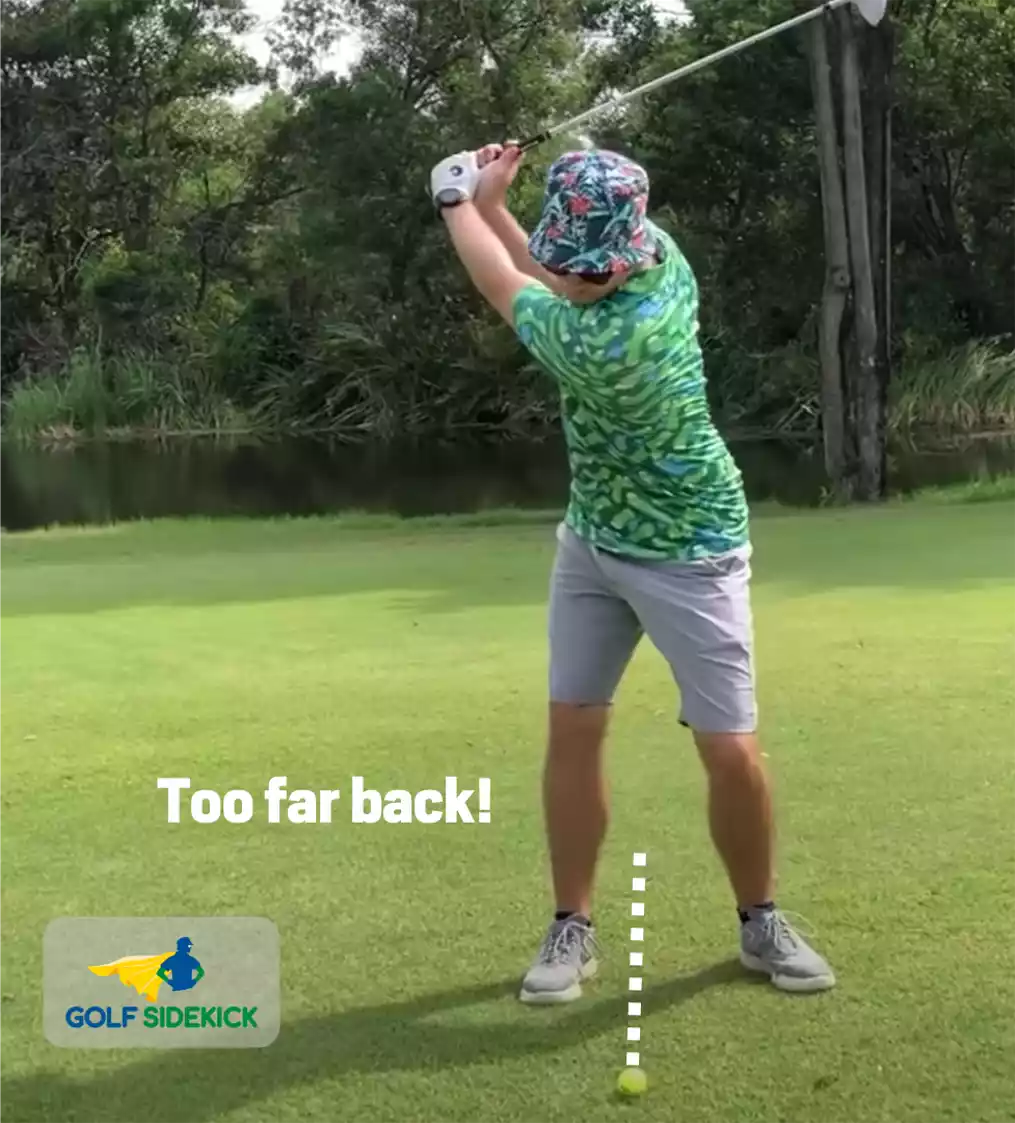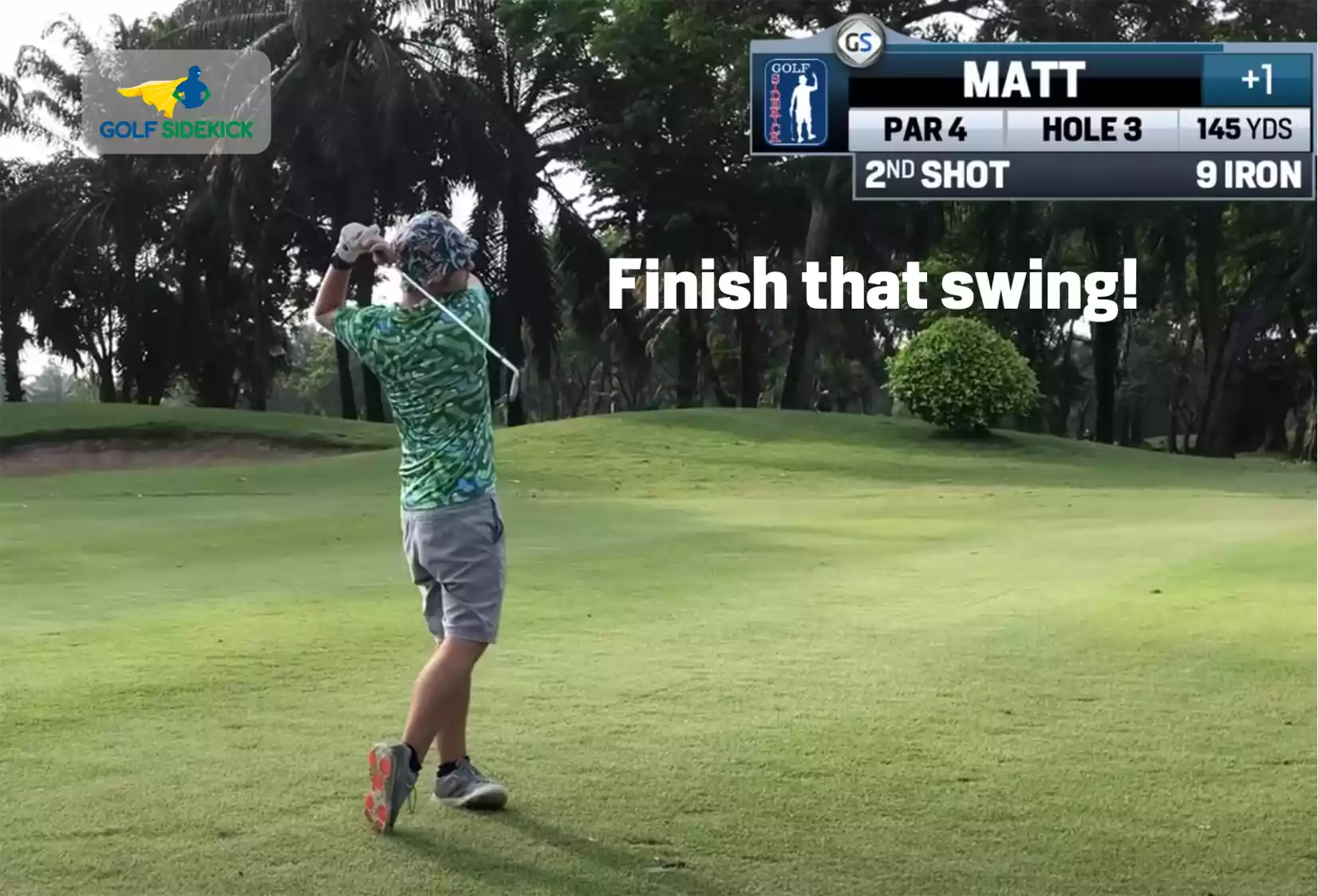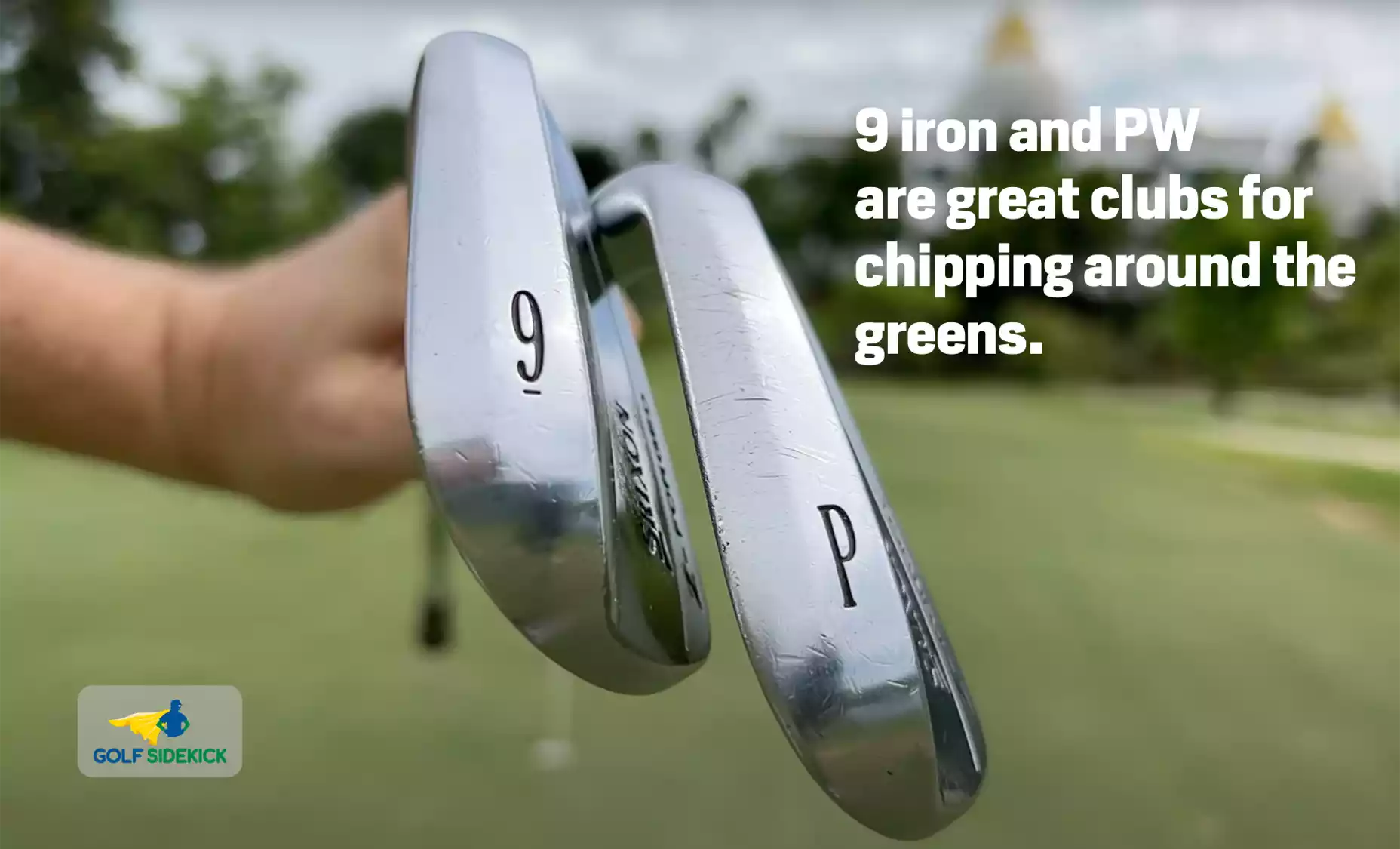Last Updated on January 30, 2024 by Matt Greene
The 9 iron should be one of the go to golf clubs in your bag. It's going to be a key part of your game within 150 yards and hitting it well leads to lower scores, whatever your handicap is.
So what's the secret for how to hit a 9 iron?
The short irons in your set require a downward strike and you are going to need to have a swing that allows you to do this. Once you have this mastered, you will find hitting the other irons in your bag will get easier, especially the pitching wedge, 8 and 9 irons.
Your 9 iron can also be used for chip shots and bump and runs around the green. It's a really versatile club, so let's look into some of the basics around the 9 irons and how you can learn to hit it one, step by step.
What Is A 9 Iron? (9 iron meaning)
A 9 iron is a golf club that will fits in the gap between your pitching wedge and 8 iron. The loft of this club will depend on the brand and manufacturer, but usually the loft of 9 iron will be between 40 and 43 degrees.
The 9 iron is one of your short irons, and will have a length of around 35.5 inches.
A 9 iron is designed to be hit from distances between 120 to 150 yards depending on ability. The average distance for a 9 iron is 126 yards. The loft on the club means the ball will launch high into the air and hopefully land softly on the green.
I will often use my 9 iron for chip shots around the green when I want the ball to roll out to the hole with less spin than my sand wedge.
How To Hit A 9 Iron
It's up to you how you want to learn to hit a 9 iron. I always start by trying to hit three quarter shots with my clubs to get that feeling of a solid contact before trying to hit full or partial shots. When I'm at the driving range, I'll try to hit 30-40 balls with one club to groove a feeling before moving onto other irons or woods.
Here a few things to try at the driving range with your 9 iron.
- Fundamentals - Grip, Stance and Ball Position
- The takeaway
- Finish your backswing
- Impact position and taking a divot
- Finish your swing
- Bonus tip - Use Forgiving Cavity Back or Hybrid Irons
Step 1: Fundamentals - Grip, Stance and Ball Position
Having good fundamentals and set up is essential when hitting any type of golf shot, including with a 9 iron.
9 iron grip
Your grip with a 9 iron should ideally be on the neutral side to promote a straighter ball flight, but I have seen every type of grip imaginable work, so find what suits you best and stick with it.
As it's a shorter club with more loft, the club face of a 9 iron is pretty easy to square up at impact. An exaggerated grip will allow you shape the ball if you have the skill, but high handicappers should try to hit the ball as straight as possible.
9 Iron Stance
Standing up to the ball for a 9 iron shot should be pretty relaxed. It's a shorter club and doesn't require the strong base you would need for a long iron or driver. Have you feet a bit narrower than shoulder width apart and it's ok to feel like your shoulders are aiming slightly left of the target.
9 iron Ball position
The ball position with your 9 iron should be in the middle of your stance.
It's ok to have the ball slightly back in your stance (about an inch from middle) if you're trying to hit a lower punchy shot with the 9 iron.

Step 2: The Takeaway
Now we've got your fundamentals sorted with the 9 iron, let's start the swing. The takeaway of your golf swing is the first few feet behind the ball, where you start your motion.
The takeaway should start low and slow, allowing the face of the 9 iron to naturally rotate as you bring the club back. Resist the temptation to "pick" the club up steeply. You need to trust the loft of the 9 iron to get the ball into the air, don't try and scoop it.
If you start your takeaway with your hips turning and creating a good pivot, you will end up getting the 9 iron set in the right position without too much extra effort.
Step 3: Finish Your Back Swing
The takeaway sets the club on its path, now we've got to get it to the stop of swing.
With wedges and short irons, there's no real reason to have to take the club past parallel at the top of the swing. yes, Jon Daly does it, but that guy is a magician and can get everything synched up to get the club back to the ball square.
With a 9 iron shot, we are looking for accuracy and control. Imagine you're playing a slightly longer pitch shot, and watch how this swing produces an accurate shot with plenty of stopping power.
If you need more distance to get over a hazard for example, just club up and hit the 8 iron.
Step 4: Impact Position & Taking a Divot
We all swing the club differently, but something we can all try to have in common with professionals is the impact position. With the 9 iron we want to compress the golf ball, which means hitting it at the low point of our swing.
It doesn't matter if it's the 9 iron, a 5 iron or a sand wedge, the first important tip is to be able to control where the iron contacts the ground and takes a divot. When you take a divot, you create solid contact and more consistent distances with your 9 iron. The difference between low and high handicap golfers comes down to pure iron strikes.
The high handicap golfer struggles to take divots out of fear of messing up the fairway or fear of chunking the ball. You must banish the fear of hitting a fat shot and PRACTICE TAKING DIVOTS.
How to hit a divot with your 9 iron
- Find a piece of grass anywhere that you don't mind messing up
- Start by hitting the ground without a ball and take divots. You can swing and take a satisfying divot over and over as many times as necessary
- Use a wiffle ball and hit shots with the wiffle ball, focusing on the front of the ball - the part of the golf ball closest to the target. Try start your divot on the target side of the ball.
- On the golf course: Take practice swings in the rough when no one is hitting. Before your shot, practice swings should take a shallow divot before your real shot.
If you are can't control the low point where the divot starts, try put 60% of your weight on your front leg. Keep that head from swaying and hit a divot.
Step 5: Finish Your Swing
This might sound a bit silly, but the key to a quality swing with your 9 iron is to finish your swing. I see so many handicap golfers quit on their swings. It's a subconscious thing, but it's like they think they're going to hit a bad shot before they've even made contact with the ball!
Finishing your swing keeps the club moving and will help you to find the low point of your swing, meaning you're taking a divot and compressing the ball. Make a few deliberate practice swings and finish looking at the target. Then step up to the ball and repeat this feeling. This time, the ball will just happen to get in the way. Easy life.

Step 6 (Bonus tip): Use FORGIVING irons!
If you have trouble with your irons, I recommend finding forgiving irons in the guides here: for best irons for mid handicappers and the most forgiving irons on the market.
When Should I Hit A 9 Iron?
As we've covered, the 9 iron is a shorter club used to attack the green. You will most likely use it for shots between 120 and 150 yards depending on your ability and swing speed.
Here are few situations where you might use the 9 iron.
Approach Shot
The approach shot into the green is the most common way to use a 9 iron.
The 9 iron is really well suited to an approach as it produces a ball flight which is high to help help the ball stop on the green.
If you're a player with a lot of swing speed, you might be able to get the ball to spin back on the green like the PGA tour pros do! But remember, the 9 iron is a finesse club, accuracy is better than raw distance.
Short Par 3
If you are playing a short par 3 in 9 iron range, (120 to 150 yards) then you will be able to use this club. An advantage here is that you will be placing the ball on a tee peg, meaning you have a perfect lie. Take aim and swing with confidence.
Chipping Around the Green
As I've said before, the 9 iron is a great club to use for chipping. Most modern chipper clubs will have the same loft as your 9 iron, so why take up the space in your bag with another club?
The bump and run chip is great way to consistently get the ball to the hole. By using a lower loft club, we're reducing the risk of chunking the ball and aren't relying on a perfect strike like you would with a sand or lob wedge.
Place the ball back in your stance (inside your right foot) and use a chipping motion to propel the ball forward. You want to pick a landing spot which is about half way to the hole to allow the ball to roll out. Obviously this will change depending on the speed of the greens you're playing, so try this out when you play next.

Is a 9 iron hard to hit?
Your 9 iron should be one of the easiest irons to hit in your golf bag. It has plenty of loft and a shorter shaft so you should be able to make goof contact with the golf ball consistently.
9 iron distance?
The average player hits their 9 iron 126 yards. If you have a faster swing speed you could hit this club up to 150 yards.
Final Thoughts
The 9 iron should be a go to club for you and I hope that everything in this guide will help you to find a way to hit this club consistently. If you want more information on how to hit your irons check out my guides on the 8 iron, 7 iron, 6 iron and 5 iron.
